Big Game?...I'm game
Terry’s Travels
Big Game?...I'm game
Finally realising a promise I made to myself 18 years ago!
Back in 2006, I dragged the old Fast Fisher 140 miles North, launching her into Sheep-haven Bay, from Downings harbour. We were targeting Blue Shark on that adventure, weather dependant of course, and with a large helping of luck from Mother Nature, we managed to venture far enough off-shore ( around seven miles) to put us in with a reasonable chance of success.
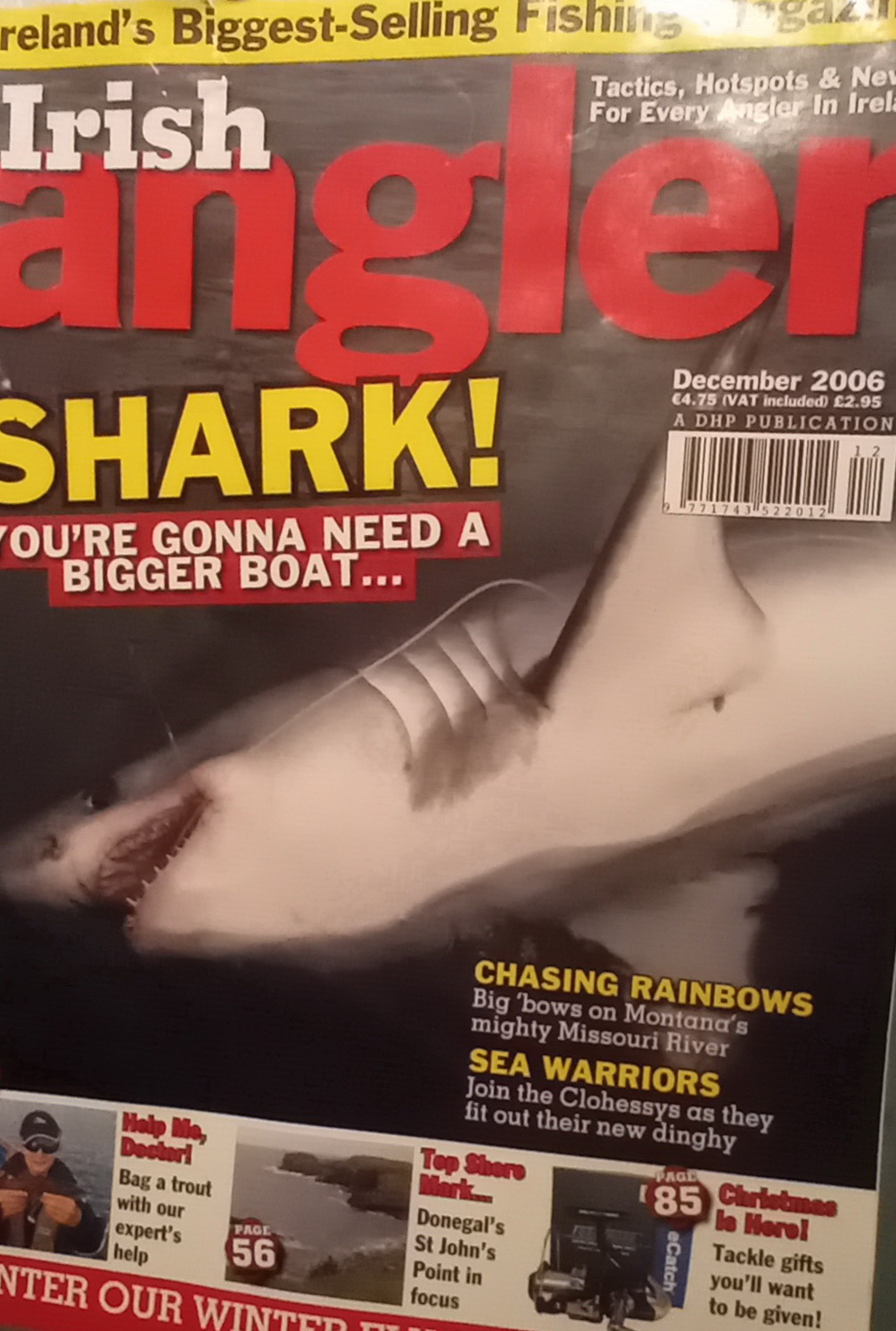
An old article for Irish Angler Magazine, 2006
We caught and tagged a handful of fish on that day-long drift, but the fight of one particular Shark behaved completely different from any I've hooked previously. Blues, in my experience "run" a bit, pull well and tend to dive, with the majority of the fight taking place below the boat. In stark contrast, this fish burnt line off the reel, and remained high in the water, regularly breaking the surface, a Blue Shark on steroids I thought!
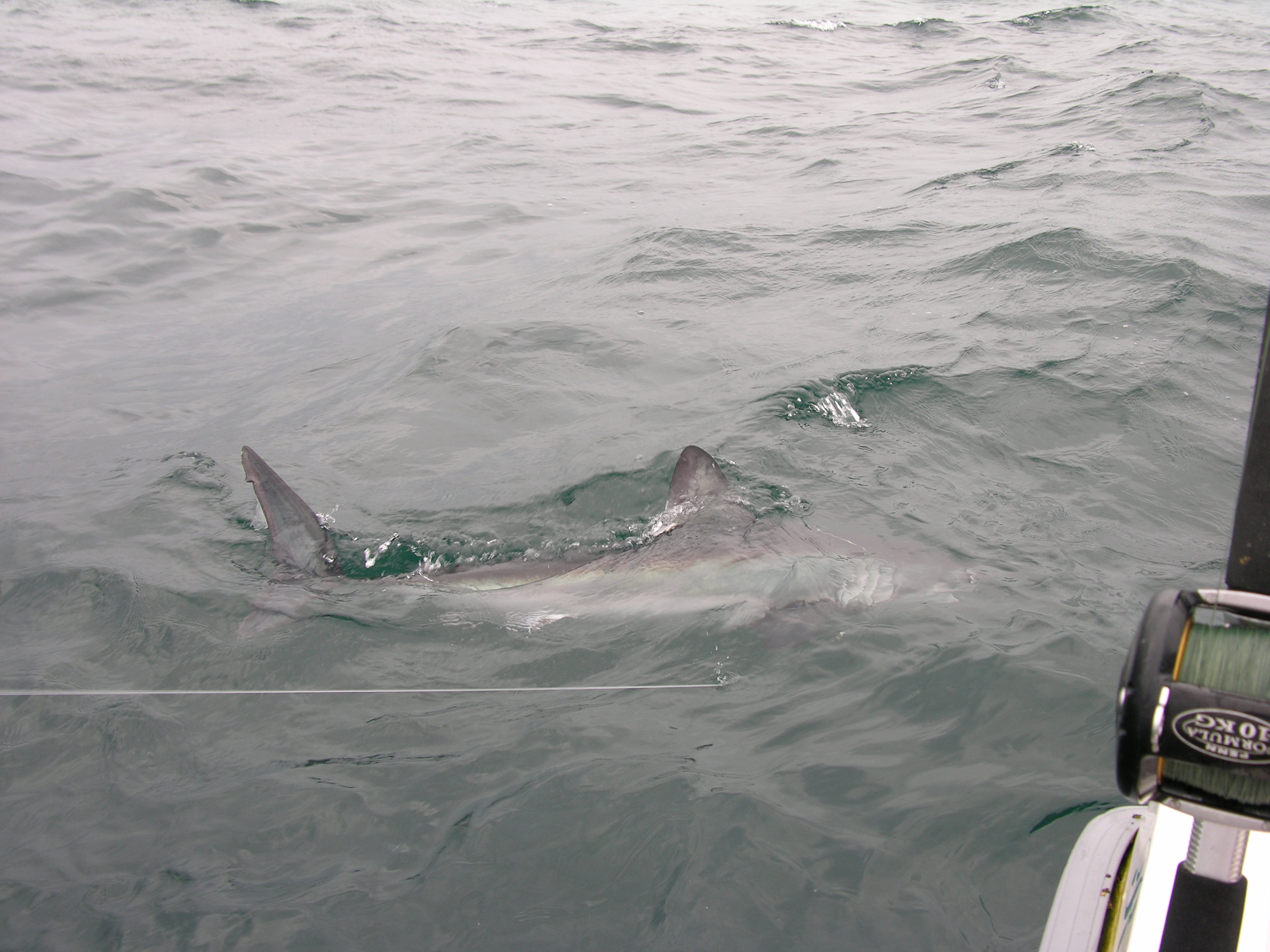
Back in 2006, my first porbeagle Shark
Believing this to be a large Blue, she eventually came close enough that we were able to catch a glimpse. I was stunned to see what I initially thought to be a massive Tope. Grey, sleek, with white flanks and an impressive turn of speed. Three times full circle around the boat before I managed to subdue her with a soft rope around the wrist of the tail....bloody hell, a small Porgie! My first encounter with this species. She eventually calmed enough, that we were able to lift her aboard for tagging and measurements. That's when all hell broke loose. Rods smashed into the air, tackle boxes wrecked, total bedlam.
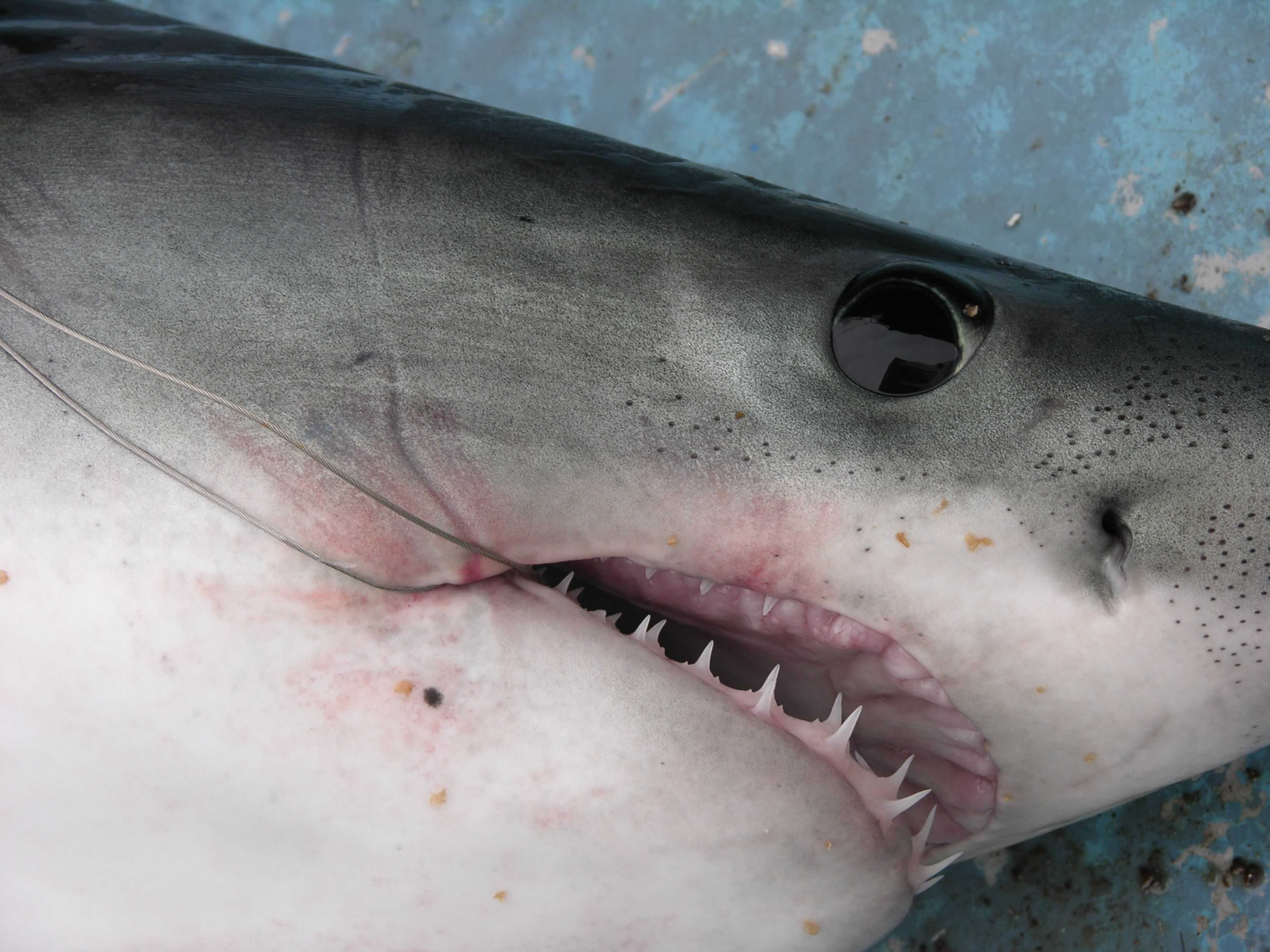
see article....http://www.angling-ireland.com/porbeagle
My two companions ran into the cabin, leaving me straddled over her like a cowboy on a wild thrashing mare, with a wet towel on her head to finally calm her down. I won't be doing that again in a hurry! Safer in the water methinks. She was measured, weighed, tagged and safely returned. Interestingly, using the standard length-girth based formula, she worked out almost exactly the weight on my calibrated scales, just under 100lbs. She would have been some Tope! What an experience, hands shaking from the rush of adrenaline, I promised myself I would have to try that again.
Years passed by, life, work, and other fishy adventures took priority. I never managed to try for these adrenaline machines again, yet regularly yearned to do so. However, the time and opportunity had now arrived, with the hope to have another bash at these awesome beasts, before I'm too old to handle the experience. Five years ago, I chatted with my good friend Sidney Kennedy, and we came up with a serious game plan to target and attempt to conquer a sizeable Porbeagle Shark.
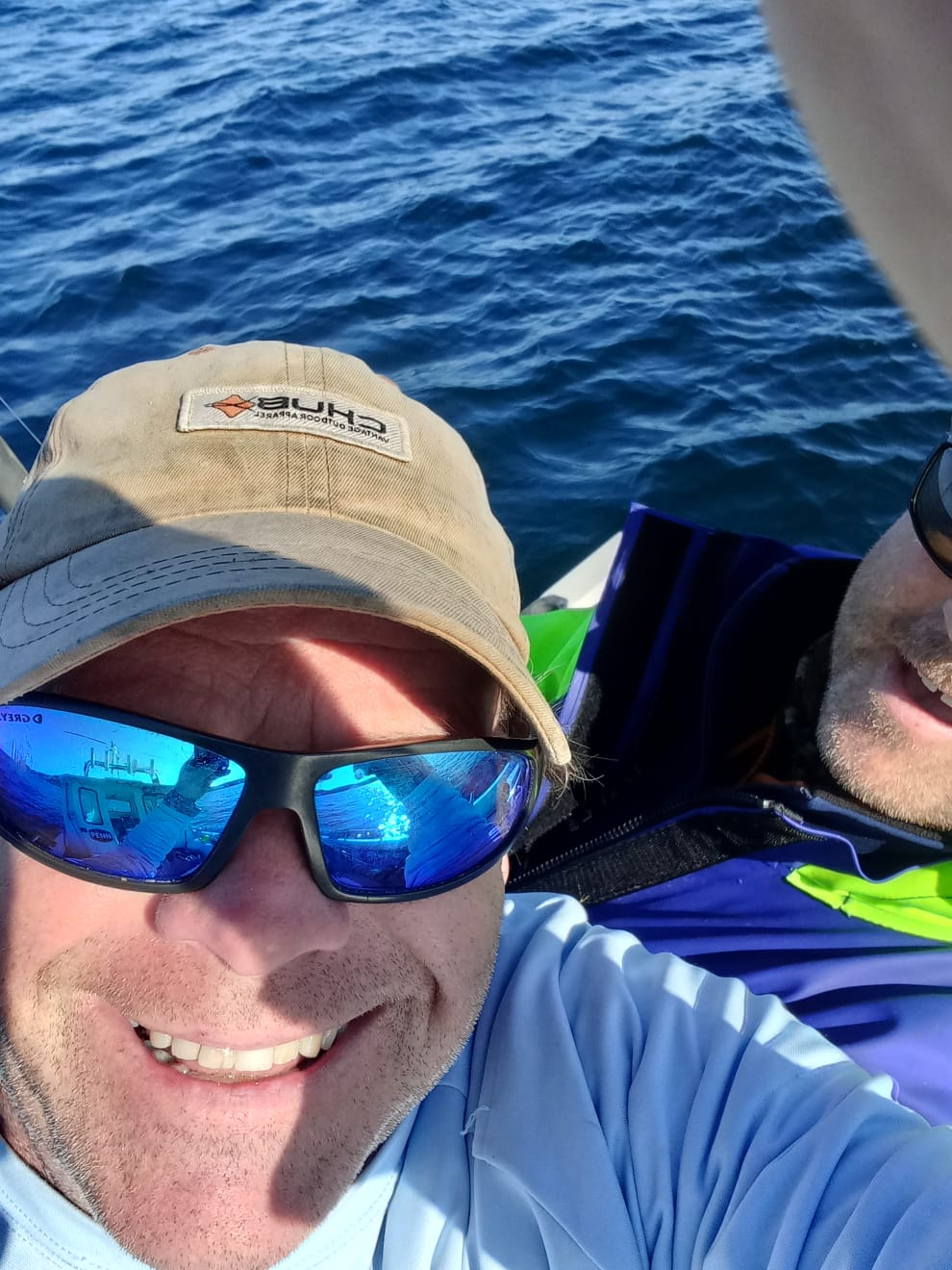
I say five years ago, and should explain.....the logistics of finding a weather window of two or three calm days in a row, during Shark season, in North Donegal, between work commitments and long-haul driving...were nigh on impossible! The effort involved, with distances and fuel costs makes it unpractical for a one day event. It took five years of watching and waiting, of disappointments and let-downs before a realistic opportunity eventually presented itself.
By this stage, as dedicated Specimen Hunters in Ireland, we have landed our fair share of sharks. I have tagged, released and collated reams of data for Inland Fisheries Ireland, but Porgies are relatively new to me. Their habitat, feeding patterns and movements, food preference and proximity to the shore, or not as the case may be...are what we wished to learn. As I said to Sid, it will be nice to find one or two fish, but this was primarily a reconnaissance mission, a learning curve for future adventures. We weren't even one hundred percent sure where to launch the Fast Fisher for the best! You have to start somewhere, and at my time of life, with five decades of angling experience behind me, it was exciting enough to create the chance of learning something new.
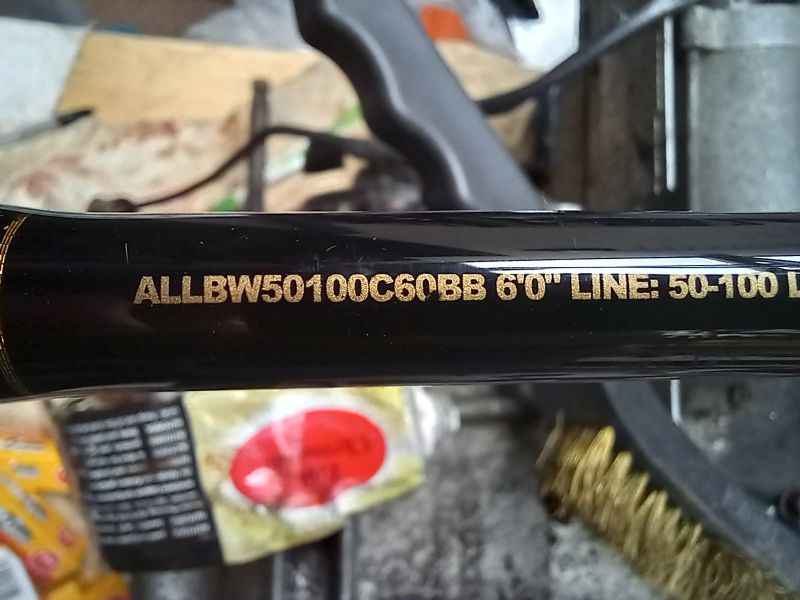
Penn "Ally"....Fabulous tried and tested rod
Our plans were now in place, and hopefully, the tackle would be suitable and sufficient, and our home-tied rigs would take the strain. My only Porgie experience was back in 2006. The ingrained memory of that time eighteen years ago, was of the power this species demonstrated on standard shark gear, and it was only a pup by Porgie standards!
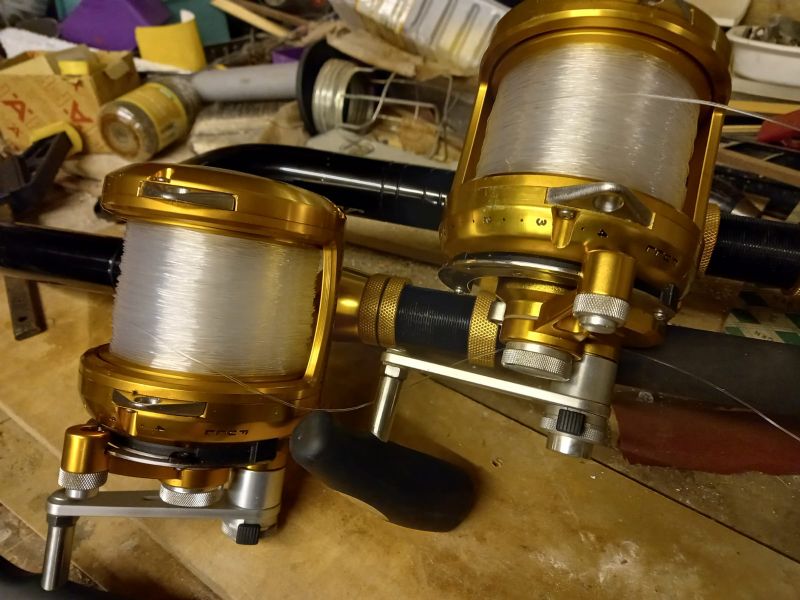
And the ultimate compliment, the "bullet-proof" Penn International 50
Now, all we were waiting for was a green light to go, and finally, we got the green light. I sent Sid the coordinates of the designated slipway, and we met up. Boat bristling with high quality Big Game gear, we were a floating advert for Penn Tackle. I couldn't believe we were finally venturing out with a chance to realise the promise I had made to myself so long ago.
On arrival at the harbour, the sea state was "lumpy", with Atlantic swells beating over rocky headlands. Peninsulas and reefs breaking the surface are awe-inspiring and on occasion dangerous, but prime hunting grounds I believe, for this particular species of Shark. Confident in the handling abilities of the Fast Fisher, the reliability of a well serviced outboard, and my own sea-fairing abilities, we headed tight to shore in search of fresh bait. Coalfish were abundant, a good sign, and a good tip to bear in mind, it can be beneficial to start where the bait-fish are present.
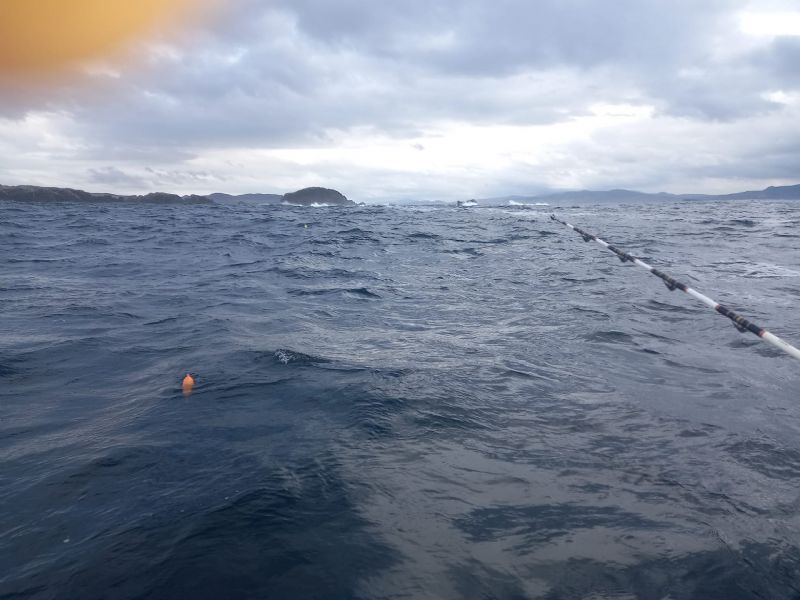
Powerful rods were fully rigged, simple balloon floats attached and depth set, it was now or never. Finding a suitable and relatively safe drift to follow, considering tidal flow and sea breezes, I hooked up a fresh Coalfish and dropped it over the gunnels, and Sidney followed suit. I watched the Coalfish drop through the depths, balloon hit the sliding stop knot, onto the surface and slipped under. Confused, I blurted out to Sid "that Coalfish isn't heavy enough to sink a balloon?" I lifted the "Penn Ally" to find line steadily peeling off the Penn 50 International. "Surely not? Perhaps a seal has grabbed the bait on the way down?"
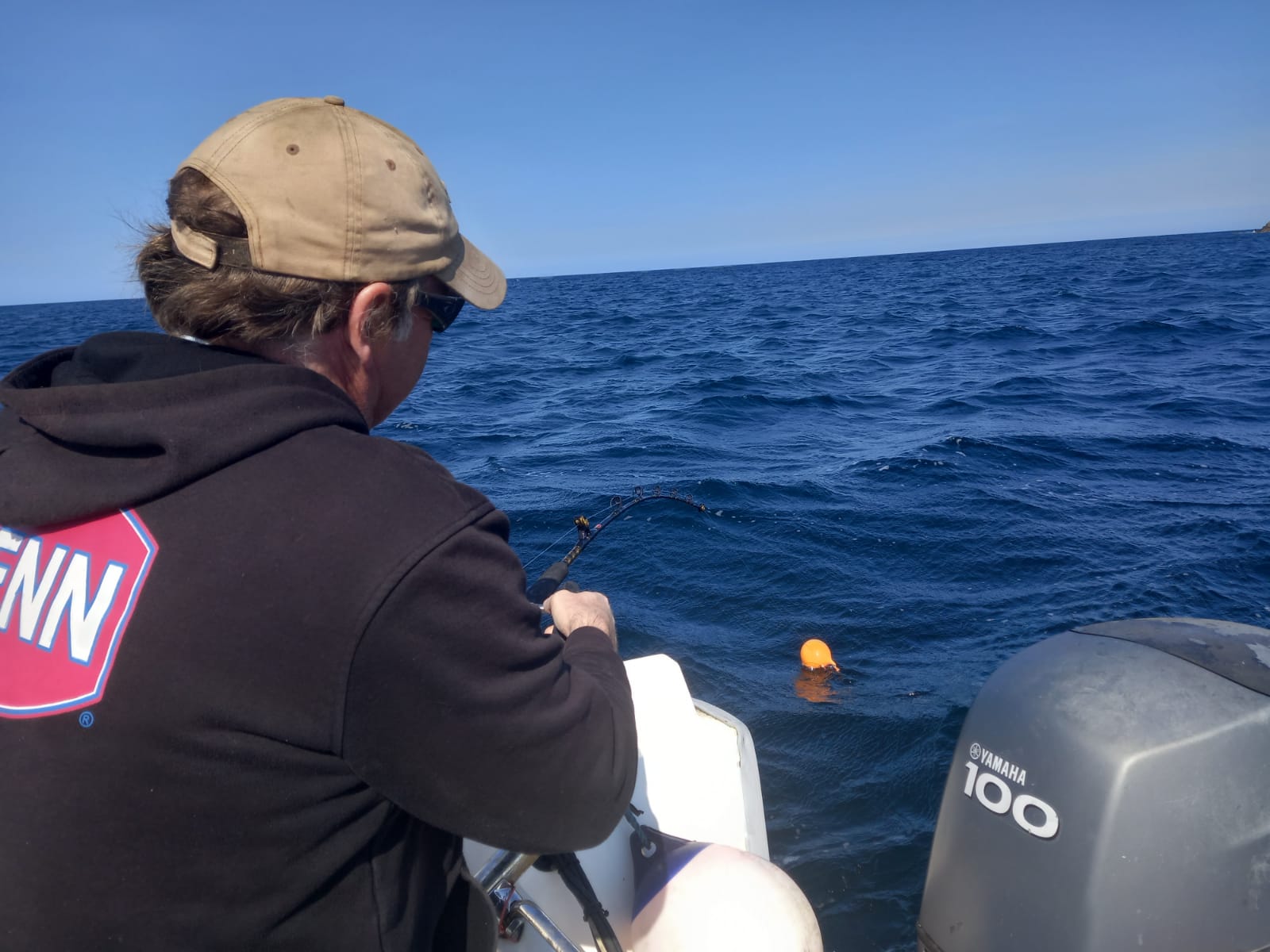
Awesome power and turn of speed, exhilarating
Tightening the drag slightly, coupled with a slow lift in a bid to carefully dislodge the Coalfish from a seal's mouth, off it "screamed" like a clip from the Jaws movie! After eighteen years waiting, there's no way I have a Porbeagle Shark hooked and "melting" line off the reel, within ten seconds of targeting them.... is there?
Sid wound in, fired up the engine, and off we went, chasing the shark out and into open water, what a rush! I fought the fish for forty-five minutes, drag tight enough to the point of almost being pulled overboard, and yet we never seemed to get any closer than two hundred metres from this powerful Shark.
Just as I was settling into the battle, and loving every exhilarating second, the hook pulled free. Devastated would be an understatement. I had never felt anything like this, the speed and power beyond anything I had experienced. Like a Skate with a rocket up its backside! I'm guessing Tuna fishing would be something similar to this. Was it something we did wrong, or simply bad luck? That may have been our only chance of seeing a large fish. Disheartened, we headed back to the mark to try again.
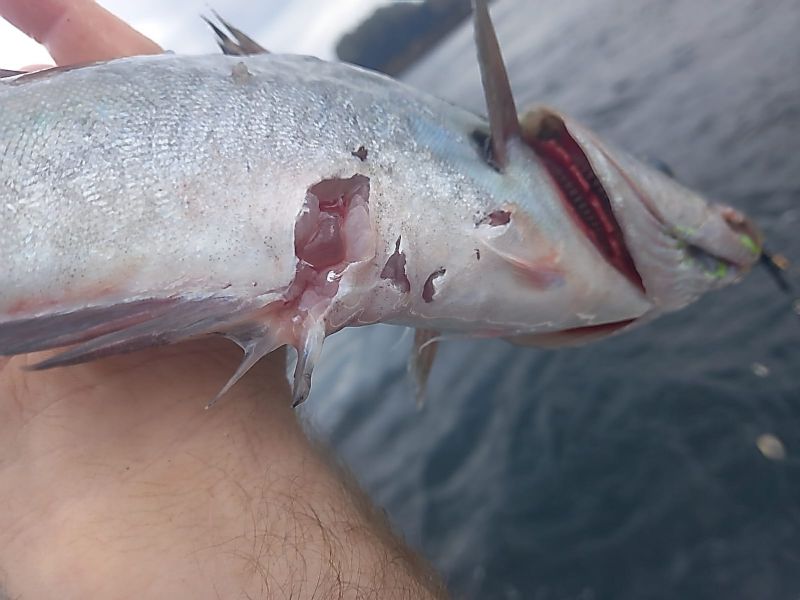
Turning the experience over in my mind, and trying to work out and solve the hook-pull issue, my immediate thoughts were on the non-stretch properties of braided main-line rather than mono. The fight was vicious, severe, and not enjoyable on this heavy gear. A softer, longer rod may be a different experience with braid, but I knew straight away that main-line mono would be a great deal more enjoyable. With the line stretch or cushion effect of mono, it was possibly less likely to pull a hook as well! However, out at sea, we had no option but to continue on our mission.
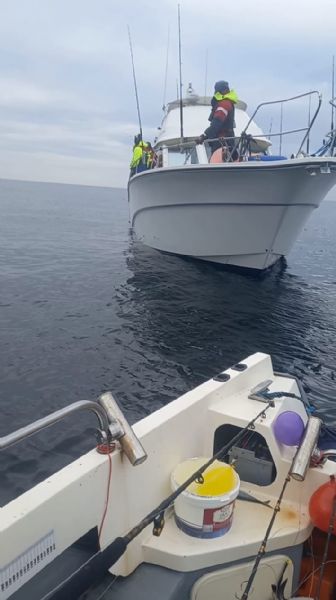
It was at this stage that a large boat approached. A fully equipped Rodman, owned and skippered by Peter McAuley. He had a team of scientists on board, including Nick Payne, Australian expert on Sharks and Shark tagging. They were hoping to target Porbeagle Sharks to aid further scientific research, and having drawn a blank thus far, asked that if we were lucky enough to hook into any, would we give them a buzz on the VHF. We chatted a while, said our goodbyes, and turned to the task in hand. No sooner were they barely a couple of hundred metres away, Sid took a screaming run....fish on...again!
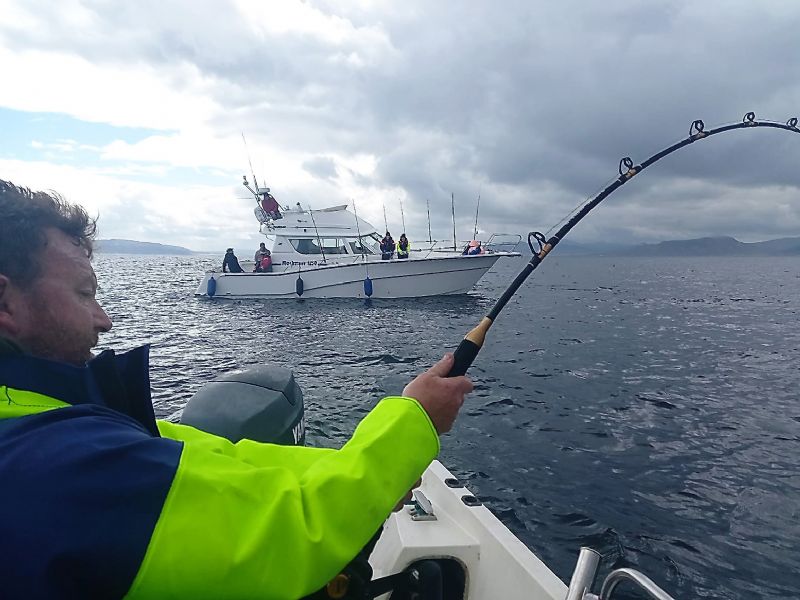
A call over the radio to Peter, and we met in safe, open water, with Sidney scrambling aboard the Rodman to continue the battle, the science team waiting in the wings to tag, measure and attach a satellite tag. I left them to it, and headed back to the mark. Thirty minutes later, a disappointing radio call...fish lost. "Sorry to hear that, but I'm just into one". I could see them in the distance, immediately steaming my way. Sid jumped aboard, I climbed onto the Rodman, a basic switch over, and away we went again. Thirty minutes later, with a two hundred and fifty pound Porbeagle at the side of the boat....you guessed it, she shook the hook. I doubted I could take much more of this disappointment, it was soul destroying! Back to my boat once again.
Throughout the day, we lost several more large fish, and by this stage, Sid wound the rods in and refused to continue. What were we doing wrong? We were doing everything right it seemed, until the fight. A full-on battle, then gone. He wanted to go back to harbour, dejected and disgusted. No one can have this much bad luck. I reiterated that we were still learning, we will figure it out, we always figure it out. This was our Porgie apprenticeship!
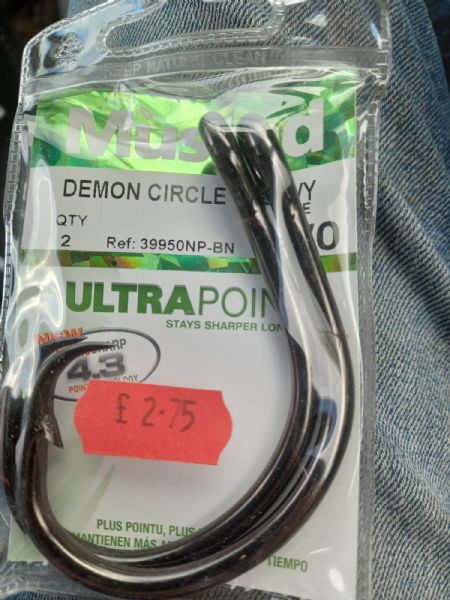
Persuading Sidney for one last try, we set up the drift, and went through the motions yet again. This time however, out of sheer desperation, my boat buddy changed his shark trace, switching hook size from a 14/0 to a massive 20/0. Another fresh Coalfish on as bait, as they were working well, and over the side.
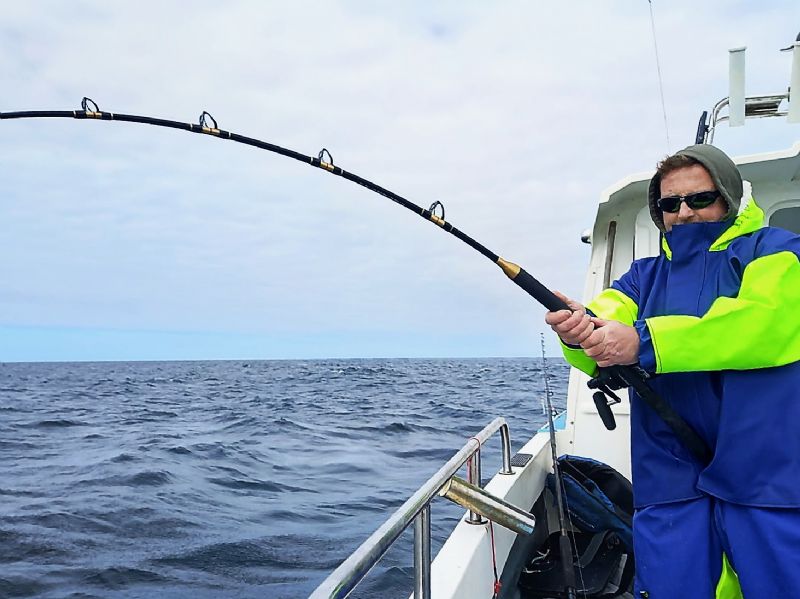
Halfway through the drift, rod buckled, line screaming from the Penn "Squall", and once again...fish on. "Any size mate?" said I......"Nah, feels like a pup" he replied. Well, an hour later, and two miles from the point of "hook-up", we were still heavily engaged with this "pup".
"It might be a little bit bigger than I thought" says Sidney. I didn't have to put a call through to Peter and the team, they had seen the disturbance from afar, and were heading our way. They wanted to pull alongside and have Sid fight the Shark from the deck of the Rodman, but this time I made the decision, we fight her on my boat.
For well over two hours this shark did everything in its power to break the line on the keel, and to tie us in knots. It breached the surface three or four times at distance, but leapt clear of the water only twenty feet from the boat, my god, what a sight! She was massive, and we then realised exactly what we were up against. Sid barked orders, port, starboard, reverse, chase after her, stop! I worked hard to keep her from diving under the boat and breaking the main line. All this time, the shark team sat two hundred yards away, patiently watching and waiting.
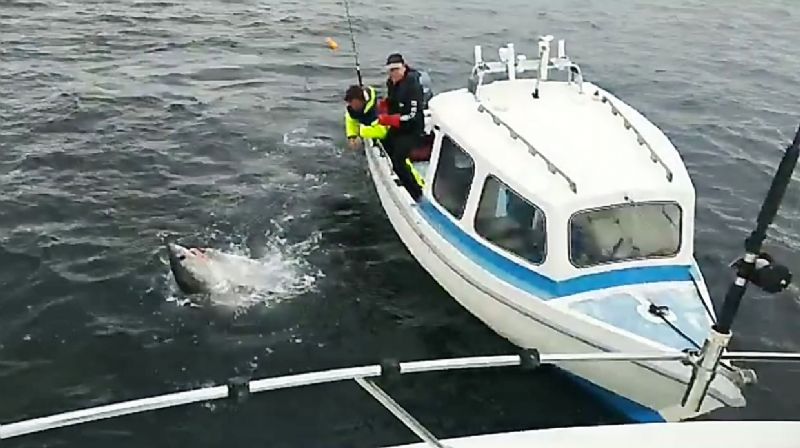
Two and a half hours into the battle and Sidney began to tire. His arm had locked, fingers cramped, and our Shark was now about twenty metres below the boat, stalemate. Both angler and shark exhausted, both refusing to give in. A bit of encouragement from me, and Sid gained a second wind, and slowly winched the fish to the surface, and what an awesome image. Close to three hours of battle, she still refused to be subdued, and almost pulled my arms from their sockets as I grabbed the leader.
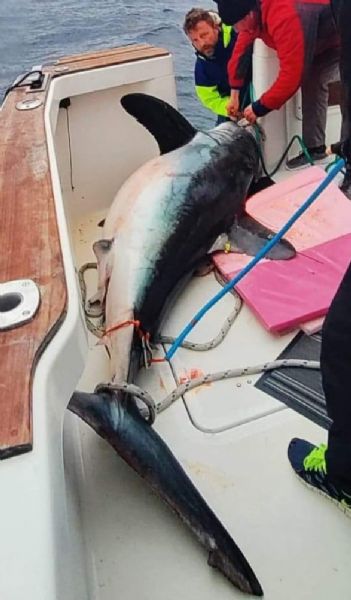
Finally, the home-made "tailer" had her secured, and we beckoned the skipper over, and let the scientists do their part. Sidney now slumped to the floor, first time I have ever seen him totally wiped out in battle with a fish. They worked her round to the swing doors, placed a soft un-hooking mat in position, and it took six of the crew to slide her aboard. Watching them was akin to watching a team of surgeons about to perform a life saving operation! Accurate length and girth measurements were logged by two, blood taken by another, and a further pair fitting a satellite tag and radio tag. Peter also fitted one of my shark tags, at my request.
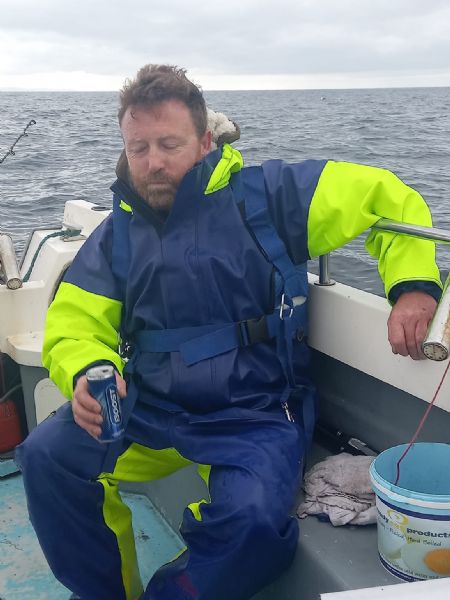
Great advert for energy drinks!
This huge female was obviously carrying pups, and the team made allowances in time taken and careful handling for this. The whole operation was fast and efficient, with a hose pipe of sea water constantly flowing through the gills keeping her wet and well-oxygenated. It was extremely interesting and a privilege to witness this professional procedure from start to finish. Within a couple of minutes, it was time to return her, and I am delighted to say she cruised away healthy and strong.
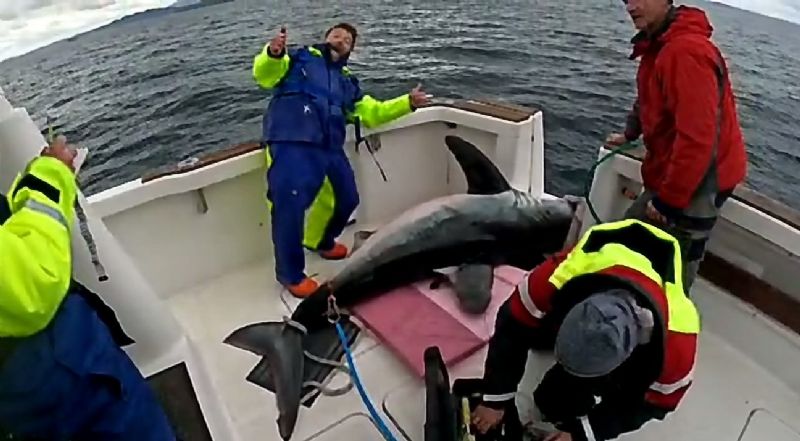
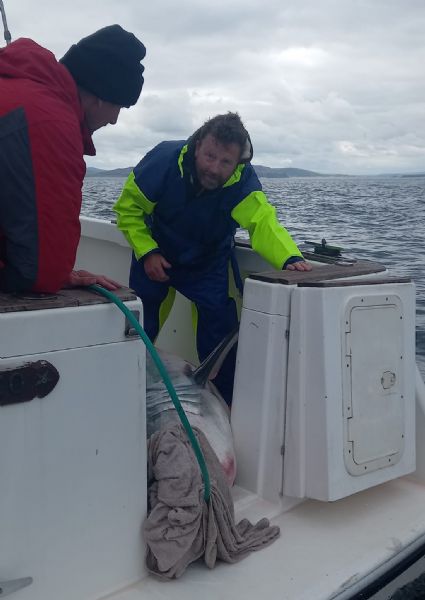
Thanks to Peter McAuley and the marine science team for verifying and recording the capture
The chatter on the deck of the Rodman was one of extreme excitement. Peter worked out her size through accurate measurements of 2.49m fork length, 3.08m total length and 1.66m girth, and using the World recognised "length by breadth" formula, came up with the startling figure of 571lbs. Although reasonably accurate, this will always be a "guestimate", we fully understand this, but what a stunning creature, amazing capture and every bit a 500lb+ shark. Bearing in mind this is unofficially yet potentially the largest scientifically recorded and expertly logged Porbeagle Shark taken on rod and line anywhere on the planet, I can safely say it was a fish of a lifetime for us.
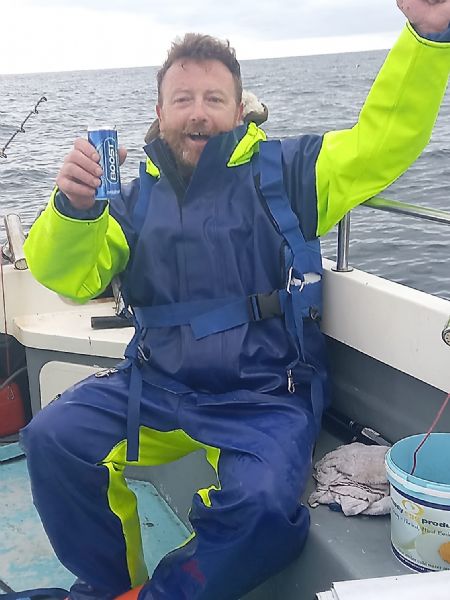
We headed back to harbour, jubilant, riding on a high with our new specimen species box ticked, along with the scientific experience and accurate data to back it up. Having had time to study the mouth parts of this particular shark, it was obvious that unless you hooked a fish in the "scissors", there was no way whatsoever that a 14/0 hook would span the bony, toothy ridge of the jaw bone. Our hooks were simply hanging on by luck it seemed. The 20/0 however, fitted neatly over the ridge for a good hook-hold. Possibly....problem solved. We would stay over-night, re-tune our gear, and try again the following day.
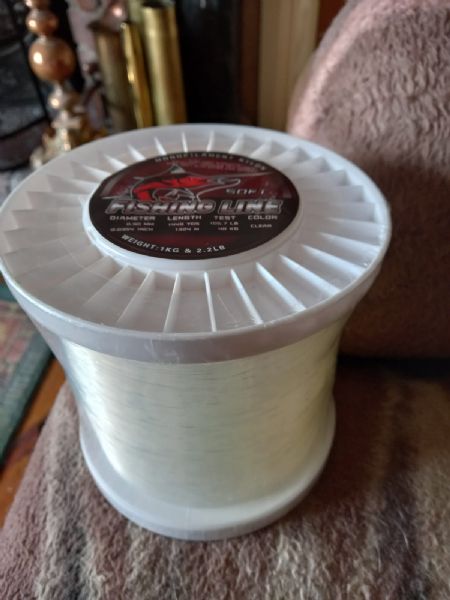
During the relaxed evening, we turned out attention to re-vamping the shark gear. First and foremost, off with the braid, and now fully loaded with 100lb b/s clear mono. Secondly, the 400lb wire "rubbing" leaders were extended to five metres. A 1.7 metre girth shark would only have to barrel roll along the line a couple of times to reach the unprotected main-line, and gone in a heartbeat! We also extended the 450lb biting wire to 2 metres. And, of course, our 14/0 hooks were replaced with 20/0 tuna circle hooks, to see if that will aid the cause. We prefer "circles" to eliminate "deep-hooking".
With breakfast over (important to keep the energy levels high) and tackle fully re-kitted, we steamed around the headland, greeted by a calmer sea state I'm relieved to say. Fresh Coalfish our initial priority and we found them in abundance, a dozen should suffice. The tension was palpable as we drifted the previous day's hot spot, but nothing. Have they gone, moved on? Baitfish were around in decent numbers, but no takes on the shark gear. Temporarily off the feed perhaps? but nothing showing on the sounder. These questions and a thousand others bounce around inside the skull. A second drift, then a third, a barren desert below it seemed. How often is this the case, just when you think you've cracked it, fishing finds a way to kick you sideways and bring you down to Earth with an almighty thump!
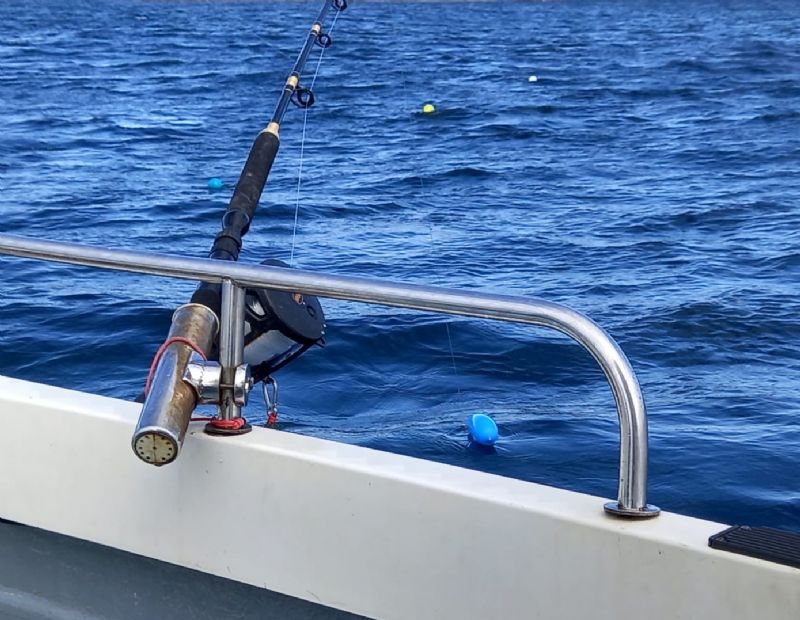
Despondent, but not defeated, we agreed on a move, hopefully to pastures green. These large sharks show on the sounder, yet nothing showed below us, obviously they have moved on round the coast or perhaps further offshore. Studying the plotter, an interesting mark revealed itself. An underwater cliff that ran for several hundred yards and parallel with the shore...a fabulous ambush feature for large predators. With our current tidal direction and offshore breezes, it would push us along the edge of it nicely, worth a shot.
With the drift set up, I only had to adjust the boat position now and then, to keep her in line and directly above the "drop-off". Two rods each, our balloon floats sat neatly in line, like ducks in a row, with a hundred yard space between each to avoid tangles, should we get a "hook-up". All quiet, as I studied the sounder. A good marking appeared on the screen, approximately sixty feet below, coincidentally at the depth we had set two of our baits. I mentioned this to Sidney as we tried to gauge the distance and speed of drift before one of the baits would pass over the marking.
A minute passed, a rod buckled, line tearing off at breath-taking speed against a heavy drag...and it was on my Penn Ally. Sid had his fun yesterday, this was my turn, fingers crossed the hook will hold. As I gently controlled the shark, teasing it away from the other lines, Sid immediately reeled in and stored the remaining rods and fired up the engine, now it's time to get naughty. I cranked up the drag and leaned hard into the fish, if it was going to pull the hook, I wanted it to happen now rather than an hour into the fight! The hook held and things became serious very quickly. This was a good fish and bloody angry, ripping line off the reel against a drag system so tight, I was struggling not to go overboard.
My god, the power. She tried on several occasions to break me on the keel, but we were now wise to that move. So, she headed for open water and refused to stop, with Sid at the helm chasing after. Three hours into the fight, she began to tire and just as well, as I now had Sidney syndrome, my fingers had locked and seized so tight I had to prise them open with my teeth.
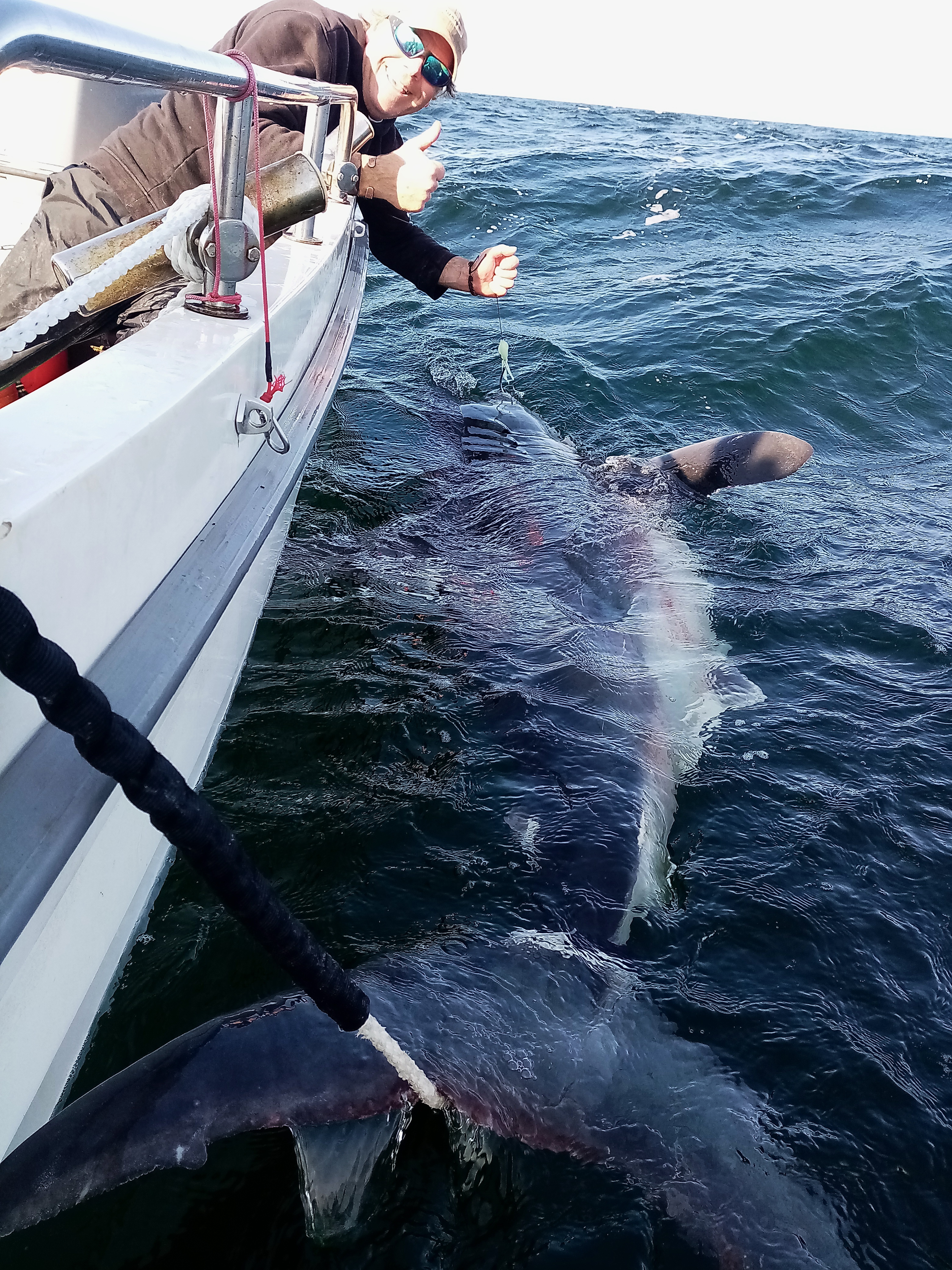
As with Sid's fish, we now had stalemate, but the twin speed and power of the Penn International was able to winch her to the surface, another huge fish. We worked out that if you tied off the wire trace to a cleat and put the engine into gear, the shark stopped thrashing and swam gently alongside. This worked out perfectly for accurate measurements, photographs, a tag for good measure and safe release.
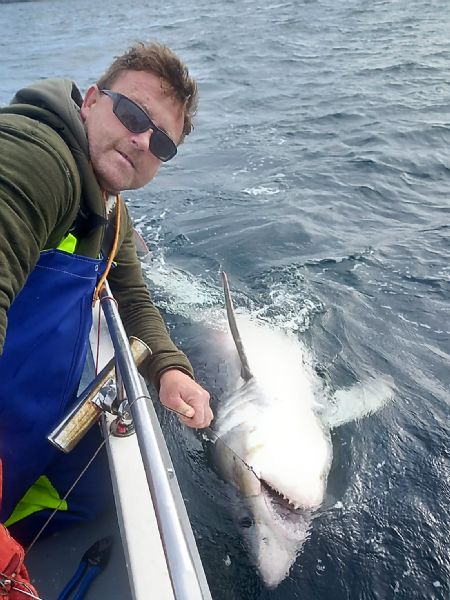
Measurements put this fish well beyond the length-based specimen threshold and in the 430lb category, and our second specimen of the mission. I checked the plotter, we were five miles away from our initial hook-up point! Exhausted but exhilarated, it was back to the submerged cliff for another drift. We agreed that any further "takes" if they came along, we would take turns, no matter whose rod took off. Our day panned out beyond anything we might have dreamt of, with a further eleven fish to the boat, no losses, and all safely released.
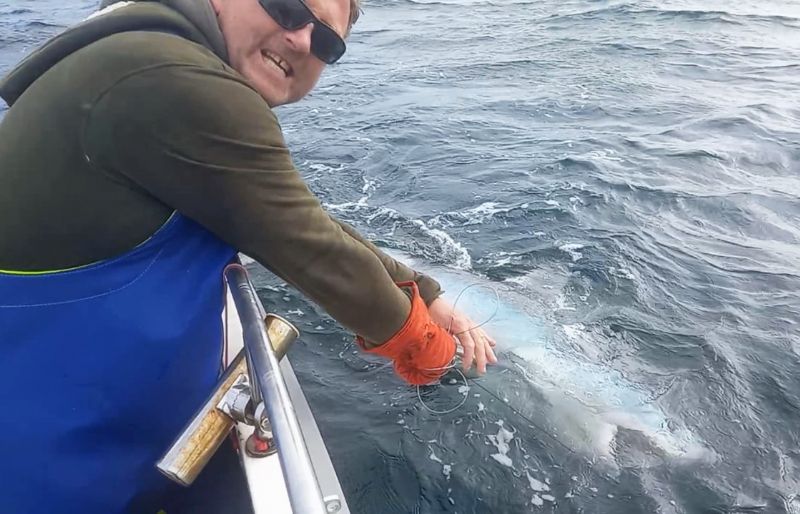
The circle hooks prevented any deep hooking. Sid's second largest fish worked out at 380lb and mine at around 250lb. From memory, we caught, tagged and released thirteen fish in total, ranging from 200lb to 571lb, including five specimens that we were able to accurately log and photograph. Certainly a learning curve, but without doubt one of the most exciting and memorable trips of my lifetime, and I've had a few.
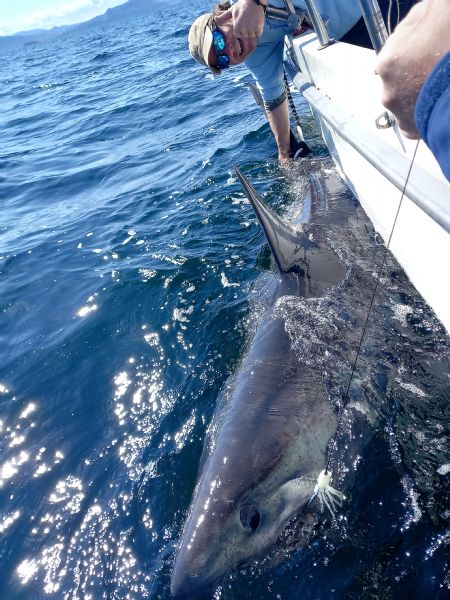
I have no doubt that local lads have caught and released equally large fish over the years. I don't know if they were measured and logged as accurately as the sharks were on this adventure, but for us, with the involvement of the scientific team, it was a trip of a lifetime, and fabulous data for Nick Payne and the team.
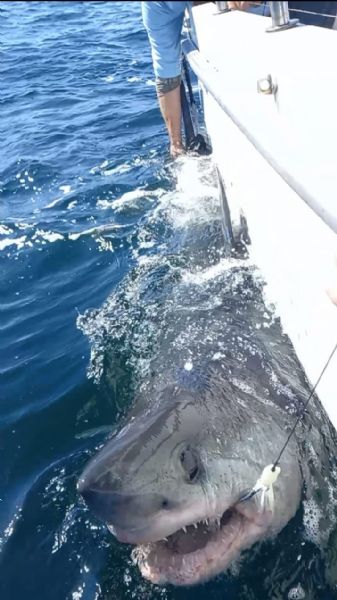
Some may be concerned regarding targeting large pregnant females, however, only three out of thirteen fell into this category, the rest were lean, mean missiles. All fish apart from two were safely released at the side of the boat. The two that were man-handled onto the survey boat for research showed no detriment to health, as they were subsequently followed throughout the year via satellite data during their migration around the geographic British Isles and up into the Arctic Circle.
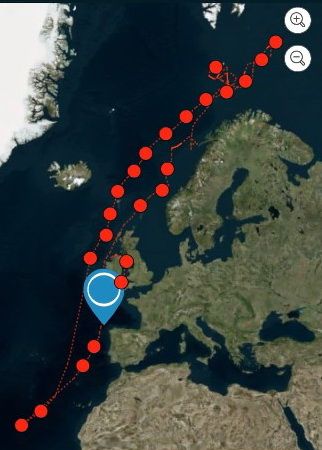
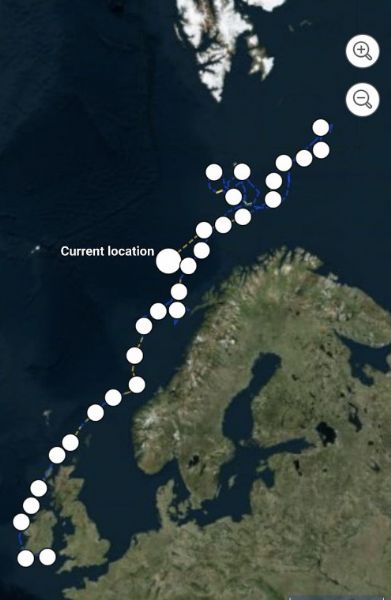
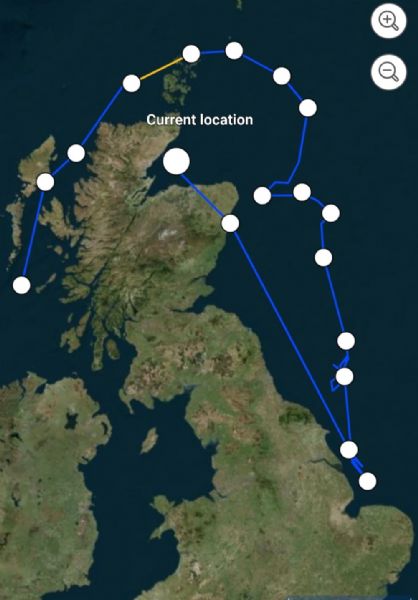
Realistic concern and criticism should be directed at the long-lining commercial boats removing tens of thousands of precious shark species from Irish waters each year. This is where the critical and un-sustainable damage lies.
Two video clip from the trip
https://youtu.be/qSCqZNywKco?feature=shared
Thanks for reading
Tight Lines
Terry






